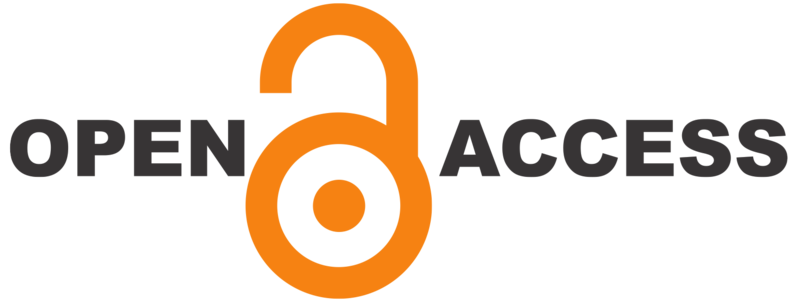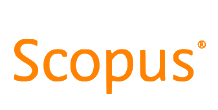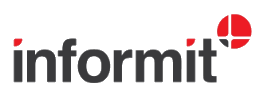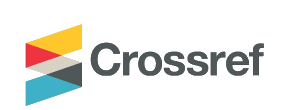Discipline predicts Work Integrated Learning (WIL) practice in Science courses
DOI:
https://doi.org/10.21153/jtlge2021vol12no2art1237Abstract
Australian mathematics and science students have low participation in WIL, posing implications for student employability. To better understand this problem we examined the industry-placement and coursework-incorporated WIL offered across the Faculty of Science at a large research-intensive university. The aim of the study was to provide an evidenced discussion of the types and amounts of WIL that different disciplines offer their students. A matrix was used to measure the inclusion of WIL activities in 265 courses (units of study) across all undergraduate programs in a Faculty of Science. The results, which show comparisons between disciplines, year levels, and class sizes. Indicate that a high proportion of courses incorporate WIL, but that some disciplines are significantly more likely to incorporate WIL than others. This study provides important insights into how science students in different disciplines and in different levels of their degree are prepared for the workplace. As we consider how to address graduate employability through integrating WIL in university STEM coursework, this study provides evidence-based justification to initiate reflection about pedagogy.
Metrics
References
AIG (2016). Workforce Development Needs Survey Report. Australian Industry Group. https://www.aigroup.com.au
Anderson, W.A., Banerjee, U., Drennan, C.L., Elgin, S.C.R., Epstein, I.R., Handelsman, J., Hatfull, G.F., Losick, R., O’Dowd, D.K., Olivera, B.M., Strobel, S.A., Walker, G.C., & Warner, I.M. (2011). Changing the culture of science education at research universities. Science, 331, 152–153. doi:10.1126/science.1198280.
Beard, C., & Wilson, J.P. (2006). Experiential learning: Best practice handbook for educators and trainers (2nd edn). London: Kogan Page.
Becher, T. (1994). The significance of disciplinary differences. Studies in Higher Education, 19(2), 151–161. https://doi.org/10.1080/03075079412331382007
Becher, T., & Trowler, P.R. (2001). Academic tribes and territories, 2nd ed. Buckingham: Open University Press.
Benjamini, Y., & Hochberg, Y. (1995). Controlling the false discovery rate: A practical and powerful approach to multiple testing. Journal of the Royal Statistical Society SeriesB, 57(1), 289–300.
Blakey, E., Khachikian, C., & Lemus, D. (2017). Increasing research requirements for tenure at teaching universities: Mission creep or mission critical? Teacher-Scholar, 8, Article 3. http://scholars. su.edu/ts/vol8/iss1/3
Campbell, M., Russell, L., Smith, L., McAllister, L., Tunny, R., Thomson, K., & Barrett, M. (2019). A framework for the institutional quality assurance of work integrated learning. Australian Collaborative Education Network.
Da Silva, K.B., Fawcett, R., Hunter, N., Buckley, P., Roberts, M., Dent, L., Wood, D., & Gannaway, D. (2009). Raising the profile of teaching and learning: Scientists leading scientists. Sydney: Office for Learning and Teaching.
Dean, B. A., & Campbell, M. (2020). Reshaping work-integrated learning in a post-COVID-19 world of work. IJWIL, 21, 356–364.
Deloitte Access Economics (2014). Australia’s STEM workforce: A survey of employers. ACT: Deloitte.
Edwards, D., Perkins, K., Pearce, J., & Hong, J. (2015). Work integrated learning in STEM in Australian Universities. Canberra: Office of the Chief Scientist Australia.
Graduate Careers Australia (2015). Graduate outlook 2015. The report of the 2015 graduate outlook survey: Perspectives on graduate recruitment. https://bit.ly/2ZoRY6G
Handelsman, J., Ebert-May, D., Beichner, R., Bruns, P., Chang, A., DeHaan, R., Gentile, J., Lauffer, S., Stewart, J., Tilghman, S.M., & Wood, W.B. (2004). Scientific teaching. Science, 304(5670), 521–522. doi:10.1126/science.1096022
Helyer, R. (2015) Learning through reflection: the critical role of reflection in work-based learning (WBL). Journal of Work-Applied Management, 7(1), 15–27. doi:10.1108/JWAM-10-2015-003
Kaider, F., Hains-Wesson, R., & Young, K. (2017). Practical typology of authentic Work-Integrated Learning activities and assessments. Asia-Pacific Journal of Cooperative Education: Special Edition, 18(2), 153–165.
Kay, J., Ferns, S., Russell, L., Smith, J., & Winchester-Seeto, T. (2019) The emerging future: Innovative models of work-integrated learning. International Journal of Work Integrated Learning, 20(4), 410–413.
Krause, K.-L. (2020): Vectors of change in higher education curricula. Journal of Curriculum Studies, (online preprint) doi:10.1080/00220272.2020.1764627
Loomes, S., Owens, A., & McCarthy, G. (2019). Patterns of recruitment of academic leaders to Australian universities and implications for the future of higher education. Journal of High Education Policy and Management, 41(2), 137–152. doi:10.1080/1360080X.2019.1565296
Mårtensson, K., Roxå, T., & Stensaker, B. (2012). From quality assurance to quality practices: An investigation of strong microcultures in teaching and learning. Studies in Higher Education, 39(4), 1–12. doi:10.1080/03075079.2012.709493
Norton, A., & Cakitaki, B. (2016). Mapping Australian higher education 2016. Melbourne: Grattan Institute.
Nulty, D.D. (2008). The adequacy of response rates to online and paper surveys: What can be done? Assess & Evaluation in Higher Education, 33(3), 301–314. doi:10.1080/02602930701293231
Office of the Chief Scientist (2020). Australia's STEM Workforce. Canberra: Office of the Chief Scientist Australia.
Oliver, B. (2015). Redefining graduate employability and work integrated learning: Proposals for effective higher education in disrupted economies. Journal of Teaching and Learning for Graduate Employment, 6(1), 56–65. doi:10.21153/jtlge2015vol6no1art573
Orrell, J. (2011). Good Practice Report: Work-integrated learning. Canberra: Australian Learning and Teaching Council.
Patrick, C.-J., Peach, D., Pocknee, C., Webb, F., Fletcher, M., & Pretto, G. (2008). The WIL (Work Integrated Learning) report: A national scoping study. Canberra: Australian Learning and Teaching Council.
Radloff, A., & Coates, H. (2010). Doing more for learning: Enhancing engagement and outcomes: Australasian Survey of Student Engagement: Australasian Student Engagement Report. Camberwell: Australian Council for Educational Research (ACER). (https://www.acer.org/au/about-us/corporate-profile)
Rowland, S., Gannaway, D., Pedwell, R., Adams, P., Evans, R., Bonner, H., & Wong, K.S. (2020) Legitimising transgression: Design and delivery of a science work integrated learning program that draws on students’ extant work in diverse, non-science fields. Higher Education Research and Development, 39(2), 318¬–331. doi: 10.1080/07294360.2019.1668364
Rowland, S., Pedwell, R., Lawrie, G., Lovie-Toon, J., & Hung, Y. (2016). Do we need to design course-based undergraduate research experiences for authenticity? CBE Life Sciences Education. 15(4):np doi: 10.1187/cbe.16-02-0102.
Scott, F.J., & Willison, D. (2021) Students’ reflections on an employability skills provision. Journal of Further and Higher Education, 1–16. doi:10.1080/0309877X.2021.1928025
Shulman, L.S. (2005). Signature pedagogies in the professions. Daedalus, 134(3), 52–59.
Sin, S., Reid, A., & Jones, A. (2012). An exploration of students’ conceptions of accounting work. Accounting Education, 21(4), 323–340. doi:10.1080/09639284.2012.661604
Small, L., Shacklock, K., & Marchant, T. (2018). Employability: A contemporary review for higher education stakeholders. Journal of Vocational Education & Training, 70(1), 148–166. doi:10.1080/13636820.2017.1394355
Smith, C.D. (2012). Evaluating the quality of work-integrated learning curricula: A comprehensive framework. Higher Education Research and Development, 31(2), 247–262. doi:10.1080/07294360.2011.558072
Tehan, D. (2019). Job-ready graduates key driver of performance-based funding for universities. Online at https://bit.ly/2ZBi0Vb
The Social Research Centre (2018). 2018 Graduate Outcomes Survey National Report. Canberra. https://bit.ly/2VSPigP
Theobald, R., & Freeman, S. (2014). Is it the intervention or the students? Using linear regression to control for student characteristics in undergraduate STEM education research. CBE-Life Sciences Education, 13(1), 41–48. doi:10.1187/cbe-13-07-0136
Universities Australia (2017). Work Integrated Learning in Universities: Final report. https://apo.org.au/sites/default/files/resource-files/2019-04/apo-nid242371.pdf
Wellings, P., Black, R., Craven, G., Freshwater, D., & Harding, S. (2019). Performance-based funding for the Commonwealth Grant Scheme. Report for the Minister for Education – June 2019. Commonwealth of Australia. https://bit.ly/321rGZL
Winchester-Seeto, T., & Piggott, L. (2020) ‘Workplace’ or workforce: What are we preparing students for? Journal of University Teaching and Learning Practice, 17(4) 2020. Online at https://ro.uow.edu.au/jutlp/vol17/iss4/11
Yeo, M., & Boman, J. (2019). Disciplinary approaches to assessment. Journal of Further and Higher Education, 43(4), 482–493. doi:10.1080/0309877X.2017.1367371












